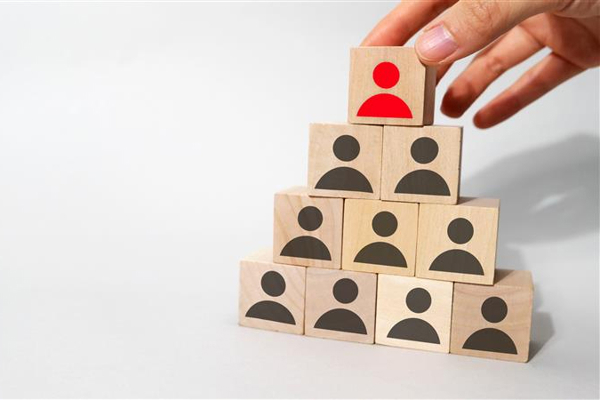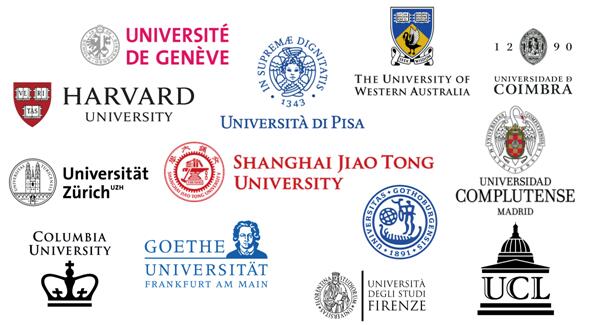Patents have fulfilled their historical mission What kind of medical technology achievements do Shanghai need to transform and evaluate professional titles
In recent years, the transformation of technological achievements has become a key topic in the pharmaceutical industry. What is truly innovation originating from China? Innovation to address major clinical needs must be closely linked to the connection between clinical practice and industry. How can policies truly be implemented? How to ensure that experts, enterprises, and hospital managers can confidently invest in it? Recently, at the Shanghai Policy Seminar on Promoting the Transformation of Scientific and Technological Achievements in Medical and Health Institutions, guided by the Shanghai Health and Development Research Center and hosted by the Shanghai Huangpu Jianxian Medical Industry Innovation Research Institute, experts from the government, industry, academia and other fields engaged in enthusiastic discussions.
Patents should be transformed into actual productivity and achieve market value
Patents should be transformed into actual productivity and achieve market value
Since 2016, the country and various provinces and cities have successively issued policies such as the Action Plan for Promoting the Transfer and Transformation of Scientific and Technological Achievements and the Guiding Opinions on Comprehensively Promoting Health and Science and Technology Innovation, encouraging hospitals and enterprises to carry out cooperation in the transformation of scientific and technological achievements. In addition, the Ministry of Human Resources and Social Security issued a document in 2017 titled "Guiding Opinions on Supporting and Encouraging Innovation and Entrepreneurship of Professional and Technical Personnel in Public Institutions", which clearly supports professional and technical personnel from universities, research institutes, and other public institutions to work in enterprises or participate in project cooperation. After the release of the Action Plan for Promoting the Transfer and Transformation of Scientific and Technological Achievements in Shanghai, public hospitals have also carried out a series of project cooperation with enterprises through patent transfer, licensing, signing of research project cooperation agreements, and doctors serving as medical consultants in enterprises.
Ge Junbo, an academician of the CAS Member and director of the Department of Cardiovascular Medicine of Zhongshan Hospital affiliated to Fudan University, has many feelings about this."The core technology needs to be mastered by oneself. At that time, we already had the China Cardiovascular Doctor Innovation Club. At the end of 2017, I launched the China Medical Innovation Alliance again, hoping to make innovation the main theme of medicine and encourage original innovation."
In the process of training and development, Ge Junbo found that participants should not only be doctors, but also material science experts, engineers, investors, etc. Only in this way can innovation training, design exchange, research support, and industrial cooperation be integrated, ultimately promoting an innovative industry chain of concept practice results. Currently, CCI's 477 students have brought over 200 patents and more than 30 startups. "But we need to note that among these startups, there are only two or three located in Shanghai, half in the Greater Bay Area, and a portion in Jiangsu and Zhejiang."
What bottlenecks does Shanghai face in implementing policies for the transformation of scientific and technological achievements? Liu Houjia, Director of the Biomedical Industry Promotion Center of the Municipal Commission of Economy and Information Technology, mentioned two core issues: "The first is investing at a fixed price, and the second is self research and self use." For a long time, many scholars have been concerned that the transformation of scientific and technological achievements into products for use in hospitals will bring risks for doctors to become both "athletes" and "referees.". In recent years, relevant implementation rules have been introduced in this city, but most of them are in a wait-and-see and hesitant attitude. "The research and development of innovative medical devices and innovative products has reached a 'no man's land', which requires us to create some truly innovative products from scratch. At this stage, the risks are high. Enterprises and investors hope to grow together with medical experts and share risks. We look forward to comprehensive tertiary medical institutions in this city piloting the establishment of companies within this year, using self-developed innovative products, and exploring the iconic Shanghai sample."
Zhang Yanshan, a fourth level researcher at the Intellectual Property Application Promotion Department of the Municipal Intellectual Property Office, brings data released by the World Intellectual Property Organization: over 90% of emerging technologies are publicly disclosed through patents. "In recent years, we have proposed the concept of 'patent operation' and established a medical and health system intellectual property operation center in hospitals. Last year, we identified 10 units in our city and hope to promote the transformation of achievements in the medical and health system."
However, after some doctors or teams have completed their professional titles, patents seem to have fulfilled their historical mission. Zhang Yanshan mentioned three key tasks: emphasizing quality, transferring, and strengthening protection. "Patents should be transformed into actual productivity, and only good patents that are directly implemented are worth protecting."

Shanghai Health and Development Research Center Conference
Undoubtedly, the ultimate goal of policy support is project implementation. For the transformation of medical technology achievements, the common goal is to truly serve the people, solve illnesses, and improve quality of life. Medical technology management and evaluation, from patents to products, and then to commodities, involve industry, demand, supply, and even state-owned asset management, tax and taxation. Therefore, in the process of promoting the transformation of scientific and technological achievements, medical institutions are both the main body of invention and application, which is overlapping. Therefore, it is necessary to strengthen the talent construction and allocation of technology service institutions for the transformation of scientific and technological achievements in medical institutions, in order to eliminate concerns for the implementation of the transformation.
Finding a balance between "micro innovation" and "high innovation" in medical technology
Undoubtedly, the ultimate goal of policy support is project implementation. For the transformation of medical technology achievements, the common goal is to truly serve the people, solve illnesses, and improve quality of life. Medical technology management and evaluation, from patents to products, and then to commodities, involve industry, demand, supply, and even state-owned asset management, tax and taxation. Therefore, in the process of promoting the transformation of scientific and technological achievements, medical institutions are both the main body of invention and application, which is overlapping. Therefore, it is necessary to strengthen the talent construction and allocation of technology service institutions for the transformation of scientific and technological achievements in medical institutions, in order to eliminate concerns for the implementation of the transformation.
What practical difficulties do medical institutions currently face in transformation? Sun Xinyan, Director of the Clinical Research Management Center of Shanghai Children's Medical Center affiliated with Shanghai Jiao Tong University School of Medicine, said, "The National Medical Products Administration has statistics that children's drugs account for 9% of the total variety of drugs in China's pharmaceutical market and 6% of market sales. One 9% and one 6% determine that children's drugs and devices have very little say in the market." This year, the center has sorted out all 130 hospital patent achievements within the effective protection period, but only 26 invention patents. "There is an evaluation stage in the process of intellectual property transfer and transfer, but it belongs to the 'fuzzy zone', and there is no clear standard to define what kind of achievements need to be evaluated. If all third-party evaluations are conducted, the high cost and long time cycle are high for children's drug devices. Undoubtedly, the pressure is enormous - the transfer amount of some achievements is only a few hundred thousand, and the evaluation requires two to three hundred thousand
In addition, the current threshold for social capital to access medical institutions is not clear, making it difficult to conduct risk assessments. If we want to do a good job in collaborative research and sharing, the principles of evaluation admission and guidance are indispensable.
Tian Feng, Minister of Industry Service Department of the Municipal Biomedical Industry Promotion Center, believes that there is currently a contradiction between the front-end quantity and back-end transformation quality of achievement transformation, which is the balance between "micro innovation" and "high innovation". The former means that its market education is relatively mature and can be quickly replicated during the promotion process, but it faces the red ocean market; The latter may be unique, but market education is just starting or even blank, and the commercialization prospects may not be clear. It may appear like a blue ocean market or an abyss. "In the dimensions of micro innovation, high innovation, market capacity and maturity, and commercialization ability, it is necessary to find a balance at the intersection: while encouraging breakthrough and disruptive innovation, it is also necessary to encourage micro innovation. However, effective micro innovation should be defined by establishing corresponding classification and evaluation standards, and in the current environment of three medical linkage, a path of innovation that combines self generating ability with capital driving force should be taken."
The core of innovation lies in talent. In addition to talents in clinical, technical, capital, legal, and intellectual property fields, the most lacking currently are talents with a composite knowledge structure and professionals who protect knowledge and experience through asset management. The state encourages comprehensive universities and medical colleges to set up medical engineering interdisciplinary majors, but the curriculum is still in a simple overlapping state and lacks practical experience. It is not enough to become versatile talents after learning finance, law, intellectual property, and medical knowledge. Similarly, simply gathering professional talents from multiple lines is not necessarily an effective and efficient composite organization Tian Feng said that some entrepreneurial mentor studios lack a supporting service system and interest coordination mechanism, resulting in low operational efficiency and inability to fully leverage their rich entrepreneurial experience and industrial resources. Corresponding mechanisms should be established and entrepreneurial mentors should be encouraged to participate in bi-directional entrepreneurial projects, truly forming an efficient and win-win business model for entrepreneurial mentors, entrepreneurs, government and other parties




